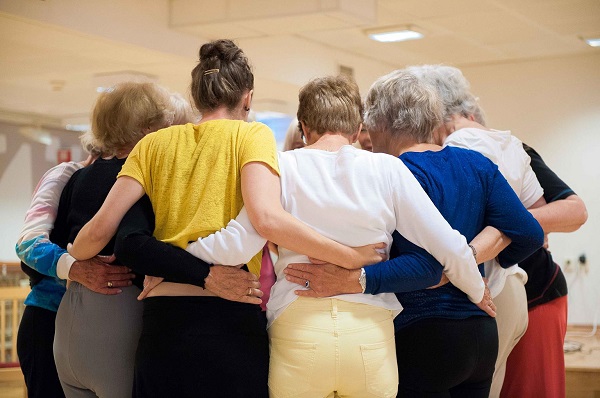Samtidsdans i møte med erfaringsrike kropper - inkluderende kunstdidaktiske grep i dans
DOI:
https://doi.org/10.7577/if.v4i2.1553Abstract
In this article the author focuses on senior dancers’ experiences of their participation in a contemporary dance group oriented towards improvisation, creative dance and performance. Further, the author is focused on articulating the art educational practice that characterises the group – the ways of teaching that frame the meaning-making and aesthetically transformative experiences that the senior dancers describe. In the article semi-structured interviews with eleven dancers aged 70 to 83 years are analysed. All dancers had taken part in the dance group The Dance Theatre in Trondheim, Norway, for 10 years when the interviews were conducted in 2015. The analysis and interpretation of the interviews take place in dialogue with theory from the field of relational, dialogical and transformative arts education. As a result the author argues that it is the meeting with dance as an art form - including playful, creative, improvisational, physically exercising, relational, touching, empowering and performative dimensions – that is meaningful for the senior dancers. The author further suggests that the art educational ways of teaching that are identified in the group open up for aesthetic transformation, transformative learning and experiences of deep learning in dance among the participants. As a result the participants experience increased quality of life and compassion towards dance as an important part of their lives.

Downloads
Published
How to Cite
Issue
Section
License
Authors who publish with this journal agree to the following terms:
- Authors retain copyright and grant the journal right of first publication with the work simultaneously licensed under a Creative Commons Attribution License that allows others to share the work with an acknowledgement of the work's authorship and initial publication in this journal.
- Authors are able to enter into separate, additional contractual arrangements for the non-exclusive distribution of the journal's published version of the work (e.g., post it to an institutional repository or publish it in a book), with an acknowledgement of its initial publication in this journal.
- Authors are permitted and encouraged to post their work online (e.g., in institutional repositories or on their website) prior to and during the submission process, as it can lead to productive exchanges, as well as earlier and greater citation of published work (See The Effect of Open Access).